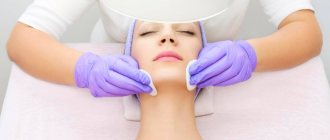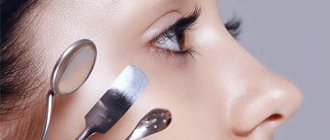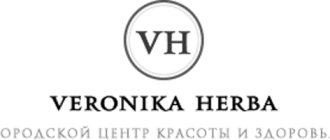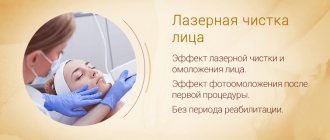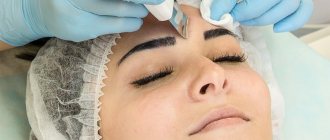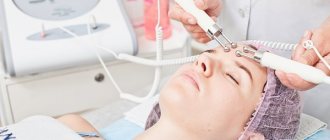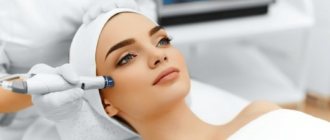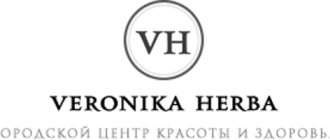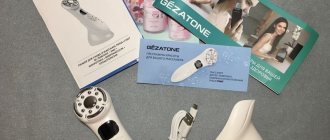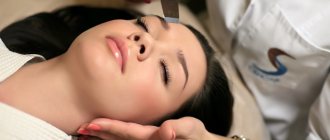In cosmetology centers you can find many methods of facial cleansing. Specialists use various creams, gels, fruit acids, lasers, and solid particles. The most popular procedure is ultrasonic facial cleansing. Mesotherapy is recommended for all people, but it is necessary to take into account the individual characteristics of the body and the technology of the procedure.
Dry facial cleansing (before and after photos)
Chemical facial cleansing is the exfoliation of dead skin layers through the use of various acids. The dead epidermis is destroyed under the influence of chemicals, and the upper layers of the skin are renewed. There are several ways to carry out dry cleaning:
- Superficial cleansing is the most gentle type of cleansing, which affects only the upper keratinized layers of the skin. This cosmetic procedure is recommended for severe acne, as well as for eliminating fine wrinkles and problem skin. Mild acids are used. Products are selected according to skin type. The recovery period does not exceed two days. At this time, it is recommended to use creams that protect the skin from sun rays, since there is a high risk of the formation of age spots.
- Middle cleansing. The procedure is prescribed for hyperpigmentation, as well as for the presence of scars and deep wrinkles on the skin. This effect is best suited for oily skin, but if there is inflammation, it is better to delay the middle cleansing. The recovery period of the epidermis is approximately 14 days.
- Deep chemical cleansing has the greatest effect, since the products penetrate into the deep layers of the skin. The procedure is indicated for senile pigmentation, as well as in the presence of deep wrinkles and burns. Deep cleansing is carried out under anesthesia, since this type of cosmetic cleansing cannot be called painless. Deep chemical cleaning is not performed for diseases of the liver, kidneys and heart. The recovery period may last several months. At this time, it is prohibited to visit saunas or use decorative cosmetics for two months. You will also have to give up an active lifestyle. The effect of deep cleansing lasts about ten years.
You can do dry cleaning yourself, using one of the products supplied by cosmetic companies. However, when carrying out the procedure at home, you should adhere to the recommendations of specialists and carefully follow the instructions set out in the instructions. Do not apply products to the area around the eyes. After the procedure, you need to apply a soothing mask.
How does the procedure work?
Skin cleansing by a cosmetologist includes the following steps:
- cleansing the skin;
- softening of the stratum corneum of the skin;
- brushing the treated area;
- thorough removal of comedones;
- applying a soothing mask.
Conventionally, these stages can be divided into preparation and direct cleansing of the skin.
https://youtube.com/watch?v=u6L_GeMNDXU
Preparation
Careful preparation is necessary before performing cleansing. It includes the following steps:
- Thorough disinfection of instruments. The specialist cleans metal tools used in work, as well as his hands, with an antiseptic. Afterwards, the doctor puts on disposable sterile gloves.
- Makeup removal and cleansing. The specialist removes cosmetic residues, sebum and dirt from the skin using lotion or a professional mask.
- Softening of the stratum corneum. The cosmetologist expands the client's pores for better cleansing. Salons use hot steam, water compresses, special masks or gels with a warming effect. Cold hydrogenation can also be used: it is suitable for patients with dilated blood vessels and thin skin.
- Brushing or brossage. The doctor treats the surface of the skin with rotating brushes and sponges with disinfected attachments. The method is practically not used in salons of the low and middle price segment.
Procedure process
Cleansing the skin of comedones also includes several stages: cleansing itself and applying a soothing mask according to your skin type.
Blackheads can be removed using special tools or using your hands. When removing comedones manually, the technician must have short, neatly trimmed nails.
Any method of cleaning the skin is performed using sterile disposable gloves.
Cleansing the skin is done as follows:
The patient's face is wiped with a disposable towel and treated with 3% hydrogen peroxide or non-alcohol lotion according to skin type. If there are closed comedones, the skin around them is stretched and carefully pierced with a Vidal needle. The puncture must be shallow! A Uno spoon or Vidal loop is applied to the skin so that the round hole in the instrument is located above the comedone. The cosmetologist presses the instrument with force, squeezing out the sebaceous plug
Depending on the type of comedones, it can be thick or liquid. The cleaned area is treated with an antiseptic composition: chlorhexidine, miramistin, alcohol or lotion with a disinfecting effect. The tool is also processed.
With the manual method, instead of tools, the nails of the master act: two index fingers squeeze the comedone on the sides and press until it comes out.
The instructions must be repeated until all comedones have left the skin. Next, the skin is treated superficially with a slotted spoon attachment for a Uno spoon.
After removing the sebaceous plugs, a mask with the required effect is applied to the patient’s face. It can be anti-inflammatory, pigment-constricting or sedative. The skin is also covered with a deeply moisturizing fatty cream.
After the session, the patient is given recommendations for skin care in the post-procedure period.
Contraindications
- herpes;
- eczema;
- diabetes;
- furunculosis;
- epilepsy;
- dermatitis;
- psoriasis;
- if you are taking antibiotics;
- taking medications that thin the blood.
We recommend that men be more attentive to the condition of their facial skin and visit a beauty salon for regular cleaning. To ensure that your face always remains healthy and well-groomed, our cosmetologists also advise you not to forget to take care of your facial skin at home. On the day of facial cleansing at SkinLazerMed, a doctor’s consultation is free. During the consultation, a cosmetologist will answer all your questions, select an effective skin care program and help you choose the right cosmetics according to your facial skin characteristics.
Second phase
After 10 minutes of cold hydrogenation, the face is completely cleansed and the master begins superficial sanitation, treating the entire surface of the prepared skin with an exfoliating strainer for five minutes. This process causes almost no discomfort and resembles a massage. This action lasts for about five minutes, after which the specialist has only 12-17 minutes for the actual active cleaning. This time limitation is caused by the cooling of the skin after hydrogenation and an increase in its traumatic nature. Therefore, the tactile and rather painful phase of the process occurs quickly and sometimes - due to the large amount of work - ends before all the sebaceous plugs are removed. If cleaning cannot be considered complete, the cosmetologist will prescribe the next procedure, which involves repeating the entire algorithm of actions.
Indications
There are several problems that you can see for yourself and conclude that it’s time to start fighting them:
- Excessively enlarged facial pores.
- Blackheads are comedones, not only in the area of the nasolabial triangle.
- Rapidly spreading acne.
- Flabbiness and decreased tone of facial skin.
- Vivid skin defects in the form of wen, milia and greasy wide pores.
- Acne.
- "Black" inflamed acne.
Such defects not only spoil the appearance, but at a certain stage cause physical discomfort and can provoke more serious problems. They need to be dealt with radically. If the problem is neglected, the skin of the face becomes rough and loses its healthy appearance.
Side effects
The greater the impact on the skin, the greater the potential complications. Therefore, the main side effects appear after manual therapy.
After cleansing, the most common symptoms that appear on the skin are:
- Redness. If the procedure is carried out correctly, the redness will subside on its own within a few hours;
- Red spots. The reasons for this effect may vary. Most often this occurs due to damage to the vessel or lack of moisture in the body;
- Pimples. They can occur if an infection was introduced during the procedure. Most often they occur during manual or vacuum cleaning. Also, new rashes may occur if contraindications are ignored. For example, bronchial asthma, dermatitis, menstrual cycle, etc.;
- Edema. If your face swells a little after the procedure, this is a normal reaction that goes away the next day. Otherwise, large swelling may cause an allergic reaction. It is necessary to consult a doctor;
- Bruises or bleeding. Appear as a result of mechanical damage, often after manual or vacuum cleaning;
- Burns. This adverse reaction can occur after inappropriate laser or ultrasonic facial cleansing. Individual intolerance may also be the cause;
- Allergic reaction. Each organism is unique, so hypersensitivity to the drugs used during cleansing is possible.
Most side effects disappear within a few days after the procedure. You should sound the alarm and go to the doctor if:
- Areas of bright red color appear on the skin. This is a consequence of a chemical burn;
- Small purulent pimples and itching on the skin. The main cause of these symptoms is intolerance to the products used in the process, as well as an allergy to sunscreen;
- If too greasy products were used during manual cleansing, subcutaneous acne may form, which is very difficult to remove.
If there are complications, you should not postpone going to the doctor, since the more time passes, the more difficult it is to solve the current situation.
Skin care after the procedure
In modern salons, the Darsonval apparatus is increasingly used to relieve inflammation and destroy the disturbed microbial environment nesting in contaminated pores, but this method is not suitable for people with a low sensitivity threshold. The effect of current pulses on the skin seems so painful to many that the procedure is often replaced with standard film masks with a strong soothing and tightening effect. In some offices (it is better to find out this question in advance) they use cryotreatment with liquid nitrogen - this promotes rapid healing of injured areas.
When you come home after the procedure, you should not wet your face or apply masks or water emulsions to it. You will have to avoid contact with water for 12-18 hours, and in the next two days only light washing is allowed without the use of gels or foams. Rubbing with lotions containing light alcohol is mandatory, but not more than 3 times a day. You need to wipe the damaged skin carefully so as not to rip off the drying wounds. It is advisable not to go out into direct sunlight for several days and not to apply cream to your face.
Summarize
A visit to a cosmetologist should be planned in advance, since after most procedures the skin requires 3 to 7 days to recover. Proper care after peeling or cleaning will allow you to get the best possible effect. And if there are contraindications and a visit to a specialist is not possible, use high-quality home facial care products.
When preparing the material, consultation was carried out by:
Olga Kirilova (cosmetologist). A specialist with higher medical education and extensive work experience. Helped hundreds of patients cope with various skin problems. Conducts non-hardware and hardware procedures. Proficient in laser and phototherapy techniques.
Popular questions on the topic:
✅ What can't be done after cleansing your face?
Facial cleansing is a fairly aggressive method of exposure to the skin, so proper restoration is necessary. Within 5-7 days after the procedure you cannot:
- apply makeup immediately after the procedure;
- constantly touch the skin of the face;
- use alcohol-containing lotions;
- use scrubs and exfoliate;
- visit the bathhouse, sauna.
The recovery time after ultrasonic facial cleansing is minimal, so if you need to quickly get your face in order, choose this method.
✅ Is it possible to put on makeup after cleansing your face?
Any facial cleansing involves some trauma to the skin, so it is important to give it time to recover. The rehabilitation period depends on the chosen cleaning method. But in any case, for the first 24 hours after any procedure.
✅ What to do after cleansing your face?
The skin needs time to recover after cleaning by a cosmetologist so that no side effects occur. To do this, you need to properly care for your face:
- the first 24 hours after the procedure there is no aggressive effect on the skin, we try not to even touch the face;
- In no case do we use alcohol-containing products for at least 1-3 days;
- During the week, we wash ourselves with herbal decoctions instead of ordinary water;
- apply moisturizer to the face 1-2 times a day;
- Make nourishing and soothing face masks several times a week.
Share with your friends!
more
Read us in the Zen channel
Preparatory stage
- Before cleaning, remove makeup. To do this, use a product that matches your skin type. If there is significant contamination, apply a special cleansing mask. In the absence of contraindications, you can do a light superficial peeling with acids of minimal concentration.
- The next step is steaming the skin. Its goal is to loosen the stratum corneum of the epidermis and open the pores, making the cleansing process much easier. The skin is exposed to jets of warm steam for several minutes. Another method of steaming is the use of a special thermal heating gel. It promotes pore expansion and prevents skin dehydration.
It should be remembered that steaming is not indicated in the presence of the following problematic skin conditions:
- pronounced capillaries on the face;
- proximity of blood vessels to the surface of the skin;
- thin dry skin;
- hirsutism;
- asthma.
In these cases, the effect of heat is replaced by cold hydrogenation. A special moisturizing gel is applied to the face, leading to swelling of epidermal cells and weakening of intercellular connections between keratocytes. Cover the top of the gel with a film and leave for about 20-30 minutes. This procedure resembles a light peeling.
All instruments are pre-sterilized. During cleaning, the cosmetologist uses special gloves.
Chemical facial cleansing
Chemical cleansing of facial skin involves the use of a variety of products (peelings) based on glycolic, salicylic or fruit acids.
As a result of such cleansing, the upper keratinized layer of skin is removed, sebaceous plugs are dissolved and pores are narrowed. In addition, regular use of peelings can regulate the activity of the skin's sebaceous glands, smooth out fine wrinkles and improve complexion.
When dry cleaning, a special gel with acids is applied to cleansed and dry skin. If necessary, the skin is massaged until specific granules are formed, then the drug is removed and a face mask is applied to the skin, depending on the skin type, which is washed off after a few minutes. Thus, the entire procedure takes no more than half an hour and does not cause any painful or uncomfortable sensations.
The result of chemical cleansing is radiant and smooth skin. It is advisable to carry out the procedure 3-4 times a month. The cosmetologist selects the dry cleaning product and the frequency of procedures, taking into account the individual properties of the patient’s skin.
There are few contraindications for dry cleaning: inflammation in the area of manipulation, injury or scratch, allergy to the components of the drug and increased skin sensitivity.
When to use mechanical peeling
Mechanical peeling is used when:
- the skin must be prepared for the application of masks, nourishing serums, gels;
- there is a general deterioration in the appearance of the skin. She loses her former complexion, tone, and fades;
- the skin peels and cracks;
- there are pigment spots;
- age-related changes begin.
When not to use mechanical peeling:
- skin damage (abrasions, cuts, scratches);
- the presence of allergic rashes;
- eczema, herpes, other skin diseases;
- moles,
- severe inflammatory processes.
Types of procedure
Next, the cosmetologist selects a specific type of treatment. At the moment, all skin cleansing procedures are grouped in two directions: manual (manual) and hardware.
Manual direction
It is carried out using the hands of a cosmetologist and simple auxiliary devices. Conventionally, it can be divided into three types of procedures:
- Classic hand cleaning. Ideal for combating acne and deep-seated impurities in the pores. It is carried out by applying finger pressure to problem areas. It is traumatic and, if safety precautions are violated, is often accompanied by complications.
- Mechanical cleaning. It is an improved version of manual action. It has similar indications, but is carried out not only with the fingers, but also with the help of special devices. The most popular among them are the Una spoon and the Vidal needle, the first is necessary for cleansing pores, the second for piercing pimples.
- Brossage. The most delicate method of all manual techniques. It is carried out using brushes and scrapers made of various materials. Such auxiliary devices cleanse the skin of surface impurities, help get rid of blackheads and remove dead cells.
manual mechanical cheat
Hardware direction
It is carried out using special high-tech devices that allow you to achieve positive results with minimal trauma to the skin. This direction is presented by the following methods:
- Ultrasonic cleaning. It involves cleansing the skin through ultrasonic vibrations, which “knock out” impurities from the pores, destroy dead cells accumulated on the surface and massage soft tissues, enhancing the regeneration of their cells.
- Vacuum cleaning. It involves drawing out impurities from pores using a vacuum. It also stimulates blood circulation and lymph flow, reduces swelling and fluid stagnation in soft tissues.
- Galvanic cleaning. It involves the effect of electric current on contaminants embedded in the pores. Once on the surface of the skin, they enter into a chemical reaction with previously applied alkaline solutions, and dissolve sebaceous plugs with blackheads.
Ultrasonic cleaning
If necessary, manual and hardware techniques can be combined to obtain maximum effect. In addition, they are often combined with other cosmetic procedures, peelings, masks, and cryotherapy. The latter often refers to one of the directions and cleaning and is carried out using cooled liquid nitrogen. It is applied to cotton swabs used to treat the face. Short-term cooling stimulates internal processes and stops inflammation, due to which the number of pimples and blackheads is significantly reduced.
A distinction should be made between cleansing and peeling; these procedures can be carried out in one session, but are by no means the same thing. So, in the first case, the goal of the cosmetologist’s work is to eliminate acne and impurities, and in the second, to remove dead cells and launch the natural processes of skin regeneration. Methods can also be distinguished by the method of implementation:
- Peeling: chemical, laser, ultrasonic, mechanical (skin resurfacing).
- Cleaning: manual, mechanical (using tools), vacuum, ultrasonic, galvanic.
